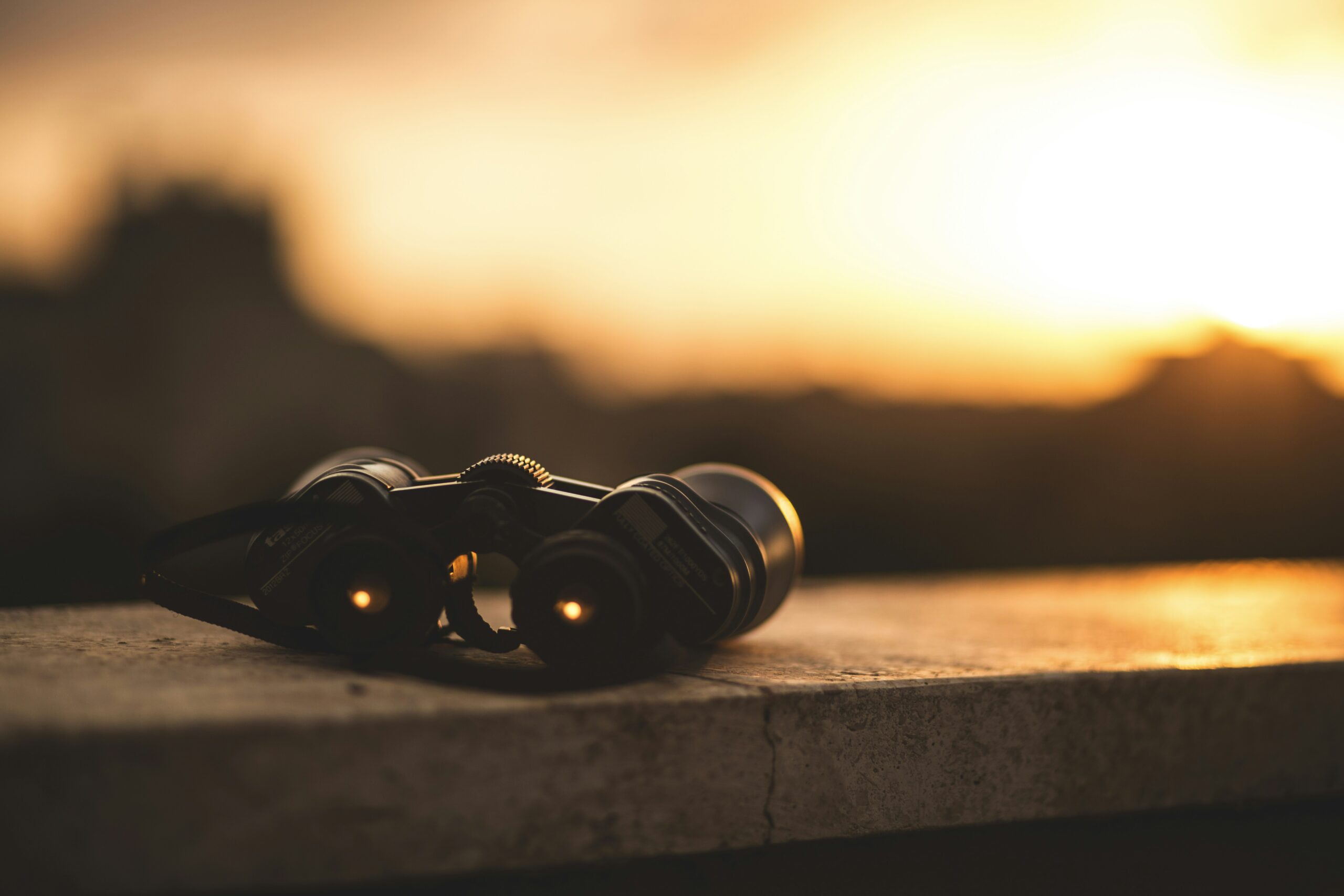Imagine being able to gaze up at the night sky and see the wonders of the universe right before your eyes. To embark on this celestial adventure, all you need are the right pair of binoculars. But what size binoculars should you choose in order to catch a glimpse of the planets? In this article, we will explore the different sizes of binoculars and guide you on your journey to the stars. Get ready to immerse yourself in the captivating world of planet observation through the lens of your very own binoculars.

Understanding the Basics of Binoculars
Explanation of binocular terminology
When you encounter binoculars, it’s important to understand the terminology associated with them. Each binocular comes with two numbers, such as 8×42, which represent its power and lens size, respectively. The first number refers to the power, often written as “8x”. This indicates the degree of magnification the binoculars offer. The second number, in this case, “42”, represents the diameter of the objective lenses in millimeters. These lenses gather light and contribute to the quality of the image you see.
Understanding binocular power
Binocular power is denoted by the first number in the binocular’s specifications. It indicates how many times closer the object will appear when viewed through the binoculars compared to the naked eye. For example, if you have 8x binoculars, the object will appear eight times closer. Higher numbers mean greater magnification, which can be helpful for observing distant objects like planets. However, excessive magnification can also lead to a shakier image and a narrower field of view.
What does binocular size mean?
Binocular size refers to the diameter of the objective lenses. It plays a crucial role in determining the amount of light the binoculars can gather. A larger lens size means more light can enter the binoculars, resulting in a brighter image. This is especially important when observing planets, as they are often far away and require sufficient light gathering to discern details. However, larger lenses also mean bulkier and heavier binoculars, which may affect portability and ease of use.
Factors to Consider When Choosing Binoculars for Astronomical Observation
Importance of power and magnification
When choosing binoculars for astronomical observation, power and magnification are crucial factors to consider. Higher magnification allows you to see planets and other celestial objects more clearly, bringing out their details. However, keep in mind that higher magnification also amplifies hand movements, making it more challenging to maintain a steady view. It’s important to strike a balance between magnification and stability to ensure a comfortable observation experience.
Role of lens size in light gathering
Lens size directly impacts the amount of light gathered by binoculars. In astronomical observation, capturing enough light is essential to see distant planets clearly. A larger lens size allows more light to enter the binoculars, resulting in a brighter and more detailed image. However, larger lenses also mean heavier and bulkier binoculars, which may be less convenient for prolonged observations. It’s crucial to consider the trade-offs between lens size, portability, and your specific observing needs.
Focus capabilities
Binoculars with good focus capabilities are essential when observing planets. Planets come in various sizes and distances, requiring adjustments to achieve a crisp and clear image. Look for binoculars that offer smooth and accurate focus adjustments, allowing you to bring the planet into sharp focus effortlessly. Quick and precise focusing ensures that you can capture the intricate details of planets and make the most out of your observation sessions.
Durability and weather resistance
When investing in binoculars for astronomical observation, it’s important to consider their durability and weather resistance. Astronomical observation often involves spending time outdoors, exposing your equipment to different weather conditions. Ensure that the binoculars you choose are built to withstand these elements. Look for models with sturdy construction, waterproof or water-resistant features, and protective coatings to keep your binoculars safe from the elements and ensure they last for years to come.
Binoculars Vs Telescopes for Seeing Planets
Benefits and drawbacks of binoculars
Binoculars offer several advantages when it comes to observing planets. They are typically more portable and easier to handle than telescopes, making them a convenient choice for stargazers on the go. Binoculars also provide a wider field of view, allowing you to take in the surrounding celestial objects along with the planet you’re observing. However, binoculars have limitations in terms of power and magnification. They may not reveal as much detail as telescopes when it comes to observing distant planets or small features.
Benefits and drawbacks of telescopes
Telescopes offer distinct advantages when it comes to observing planets. They often provide higher magnification and allow for more detailed observations, especially when it comes to smaller features on distant planets. Telescopes are designed specifically for astronomical observation and can be equipped with various filters and accessories to enhance your viewing experience. However, telescopes are typically larger, bulkier, and less portable than binoculars. They also require more setup and calibration, making them less suitable for spontaneous stargazing sessions.
Choosing based on personal need and experience level
The choice between binoculars and telescopes for observing planets ultimately depends on your personal needs and experience level. If you prioritize portability, ease of use, and a wider field of view, binoculars may be the ideal choice for you. On the other hand, if you’re a seasoned stargazer seeking high magnification and detailed observations, a telescope might be the better option. Consider your observing goals, mobility requirements, and familiarity with astronomical equipment to make an informed decision.
Describing the Different Planets You Can See with Binoculars
Ability to see Mars
Mars is one of the most exciting planets to observe, and with the right pair of binoculars, you can appreciate its distinct reddish hue and potentially even discern some surface features. Look for Mars when it is in opposition, which occurs approximately every two years when it is closest to Earth. Higher magnification binoculars with good light-gathering capabilities will enhance your chances of observing Mars with clarity, especially during its opposition.
Spotting Venus
Venus, often referred to as the “evening star” or “morning star,” is easily visible with the naked eye and even more captivating when observed through binoculars. Venus exhibits a stunning phase similar to the Moon but appears much brighter. Its high reflectivity makes it easily visible, even in heavily light-polluted areas. Binoculars with moderate power can reveal Venus’s phases and provide a closer look at its surface.
Observing Jupiter
Jupiter, the largest planet in our solar system, is a mesmerizing sight when observed through binoculars. With its prominent equatorial bands and four largest moons, known as the Galilean moons, Jupiter offers a wealth of features to explore. Look for Jupiter when it is at opposition, as this is when it is closest to Earth and appears its largest and brightest. Higher power binoculars will allow you to see more detail, including the cloud bands and even the moons.
Looking at Saturn
Saturn, with its stunning rings, is undoubtedly a planet that captures the imagination of stargazers. While binoculars may not reveal the intricate details of Saturn’s rings as a telescope would, they can still provide a delightful view of the planet and its ring system. Look for Saturn when it is at opposition, as this is when it appears its brightest and largest. Binoculars with good light-gathering capabilities and moderate power are ideal for observing Saturn and appreciating its unique beauty.
Observation of distant planets
While the larger gas giants like Jupiter and Saturn are typically the most visible and accessible planets for binocular observation, it is also possible to catch glimpses of the outer planets Uranus and Neptune with binoculars. However, due to their great distance from Earth, they will appear as faint points of light, much like stars. Observing these planets with binoculars requires a dark sky, patience, and a good understanding of their positions and visibility throughout the year.

Ideal Size of Binoculars for Viewing Certain Planets
Suggested magnification for Mars
When observing Mars, a moderate to higher magnification is suggested to capture its finer details. A magnification range from 10x to 12x is ideal, allowing you to see Mars more clearly during its opposition. However, keep in mind that higher magnification may result in a narrower field of view and increased image shakiness. It’s crucial to find the right balance between magnification, stability, and the level of detail you wish to observe.
Recommended lens size for Jupiter
Jupiter, with its prominent features and moons, benefits from a larger lens size to gather sufficient light for clearer observations. Binoculars with a lens size of around 50mm to 70mm are recommended for observing Jupiter. The larger lenses will help enhance the brightness and detail of Jupiter’s cloud bands and provide a better view of its four largest moons. However, it’s essential to consider the overall weight and size of the binoculars when opting for larger lens sizes.
What size binoculars for the best view of Saturn?
To enjoy the best view of Saturn and its stunning ring system, binoculars with a lens size of 50mm to 80mm are recommended. These larger lenses allow for adequate light gathering, resulting in a brighter image and better visibility of Saturn’s rings. The ringed planet exhibits captivating details that can be appreciated with binoculars, especially during its opposition. However, be mindful of the weight and size of the binoculars, as larger lenses typically mean a bulkier and less portable setup.
The Benefit of Higher Power for Planetary Observation
Increased detail with higher power
Higher power binoculars can bring out the finest details of the planets, allowing you to appreciate their intricacies. Magnifications between 10x and 12x are ideal for observing planets like Mars, where finer features may be present during its opposition. With higher power, you can potentially spot subtle variations in color, surface features, and even the presence of atmospheric conditions on certain planets. However, it’s important to find the right balance between magnification and stability to maintain a steady view.
Limitations of high-powered binoculars
While higher power binoculars provide increased magnification and detail, they also have some limitations. Higher magnification amplifies hand movements, resulting in a shakier image. This can make it more challenging to maintain a steady view, especially during extended observation sessions. Additionally, high-powered binoculars may have a narrower field of view, making it more challenging to locate and track objects in the night sky. It’s important to consider these drawbacks when choosing the power of binoculars for planetary observation.
Impact on portability and steadiness
Choosing higher power binoculars for planetary observation can have an impact on your overall observing experience in terms of portability and steadiness. Higher power often means larger objective lenses and heavier binoculars, which can make them less convenient for prolonged handheld observation. To maintain a steady view, you may need to use a tripod or other stabilization devices, adding to the overall setup and reducing portability. Consider your specific needs and preferences for portability and steadiness when deciding on the power of your binoculars.

The Role of Binoculars Aperture in Astronomical Observation
What is binoculars aperture?
Binoculars aperture refers to the diameter of the objective lenses, typically measured in millimeters. It determines the amount of light that can enter the binoculars and ultimately impacts the brightness and clarity of the image you see. Aperture plays a crucial role in astronomical observation, as celestial objects like planets often require sufficient light gathering to reveal their details. A larger aperture allows more light to enter the binoculars, resulting in brighter and more vibrant images.
Importance of larger apertures
Larger apertures in binoculars have several advantages when it comes to astronomical observation. Firstly, they enable greater light gathering, which is essential when observing faint or distant objects like planets. This increased light gathering capability enhances the visibility of finer details and improves image quality. Additionally, larger apertures allow for better performance in low-light conditions, making them ideal for stargazing sessions during dusk or under a partially obscured sky. However, it’s important to note that larger apertures often come with an increase in size, weight, and overall bulkiness of the binoculars.
The trade-off of binocular size and weight
When considering binoculars with larger apertures, it’s crucial to balance your desired observing capabilities with the practicality of size and weight. Larger apertures typically result in bulkier and heavier binoculars, making them less portable and convenient for spontaneous stargazing sessions. If you plan on using the binoculars primarily for astronomical observation from a fixed location, such as your backyard, a larger aperture may be worth considering. However, if portability and ease of use are important factors, a balance between aperture size and overall binocular weight should be taken into account.
How to Use Binoculars for Astronomical Viewing
Getting started with binocular stargazing
To get started with binocular stargazing, it’s important to become familiar with your equipment. Read the user manual of your binoculars to understand the proper handling, focusing mechanisms, and any additional features they may have. Additionally, familiarize yourself with the night sky by studying star charts or using astronomy apps that help you identify planets and other celestial objects. Start by observing the Moon and gradually move on to brighter planets like Venus and Jupiter before venturing into fainter objects.
Locating a planet with binoculars
Locating planets through binoculars requires a systematic approach. Begin by identifying bright stars or reference points in the night sky, as they can act as guideposts for finding planets. Once you’ve identified a bright star or a prominent constellation, use your binoculars to scan the nearby area. Planets will appear as points of light, but their steady glow distinguishes them from stars. Use star charts or astronomy apps to predict the planet’s position at a specific time and date for optimal observing.
Maintaining a steady view with high-magnification binoculars
When using high-magnification binoculars, maintaining a steady view becomes crucial for enjoyable observation. Handholding high-powered binoculars for an extended period can result in camera shake and a blurred image. To counter this, consider using a tripod or other stabilization equipment specifically designed for binoculars. Attach your binoculars to the tripod mount, ensuring a secure connection. This will allow you to maintain a steady view, even with higher magnification, and fully appreciate the details of the planets you’re observing.
Additional Equipment for Binocular Planet Observation
Use of tripods for stability
Using a tripod with your binoculars can greatly enhance stability and the overall observing experience. Tripods provide a steady base, eliminating hand movements that can cause image shake or blurriness, especially when using higher magnification binoculars. Choose a tripod that is compatible with your binoculars and offers adjustable height and sturdy construction. Many tripods also come with a pan-and-tilt head or a ball head for smooth and precise adjustments.
Importance of star charts
Star charts are invaluable tools for locating planets and other celestial objects during your observation sessions. These charts provide visual representations of the night sky and highlight the position of planets at specific times and dates. They help you identify bright stars or constellations that can act as reference points for finding planets. Consider using printed star charts or astronomy apps that offer real-time sky maps on your smartphone or tablet for convenient access to information during your stargazing adventures.
Protective case and lens covers
To ensure the longevity and protection of your binoculars, it’s essential to invest in a suitable protective case and lens covers. A padded carrying case will safeguard your binoculars from dust, moisture, and accidental impacts during transportation or storage. Lens covers, both for the objective lenses and the eyepieces, help prevent scratches, dust buildup, and potential damage when not in use. Proper maintenance and protection of your binoculars will extend their lifespan and preserve their performance for years of astronomical observation.
Conclusion: Choosing the Best Size Binoculars for You
When it comes to choosing the best size binoculars for your planetary observation needs, it’s crucial to consider a variety of factors. Balance your desired magnification, lens size, and aperture with your specific goals, portability requirements, and familiarity with astronomical equipment. Opt for binoculars that offer a suitable balance between power and stability, ensuring a steady view while allowing for detailed observations. Take price and longevity into account, and consider recommendations based on specific goals or planets of interest. By carefully considering these factors, you can find the ideal size binoculars that will bring the wonders of the planets closer to you.

